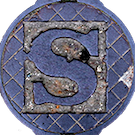23
edits
 Synthesis Infrastructures
Synthesis Infrastructures
Jameshowison (talk | contribs) No edit summary |
No edit summary |
||
| (2 intermediate revisions by 2 users not shown) | |||
| Line 136: | Line 136: | ||
1.) STRUCTURE & USE | 1.) STRUCTURE & USE | ||
IPCC -> claims | IPCC -> claims in obsidian | ||
beyond info | beyond info architecture | ||
holy scripture | holy scripture available for the masses | ||
find new connections | find new connections | ||
index | index | ||
| Line 195: | Line 195: | ||
Tremendous value vision, sustainable overhead? | Tremendous value vision, sustainable overhead? | ||
Finding the right structure | Finding the right structure | ||
Matthew's answers to our draft questions: | |||
- Research Data Alliance (RDA), Materials Research Data Alliance (MaRDA), workshops | |||
-Taking interdisciplinary in a very narrow sense, an example to bridge gaps between existing materials databases is OPTIMADE. We spent 5 years devising a common API format between 15 or so existing crystal structure databases, primarily of competitors, and with varying uptake. Should now be possible for anyone, to create a database and join the federation, e.g., a new project just tripeld the number of structures available. Each database has different slants even if the quanta of data shared is common. Unclear if this is socially sustainable. Hinged on developing a lightweight federation with "shoddy" infrastructure on top of a relatively API format. | |||
- Specific example: as this data is machine-actionable, new software projects can now query all known materials, potentially significantly accelerating materials discovery. New databases can trivially join the federation, and previously "dead" data can be brought back to life by adding an API on top of it. Automated labs can exchange information. | |||
edits